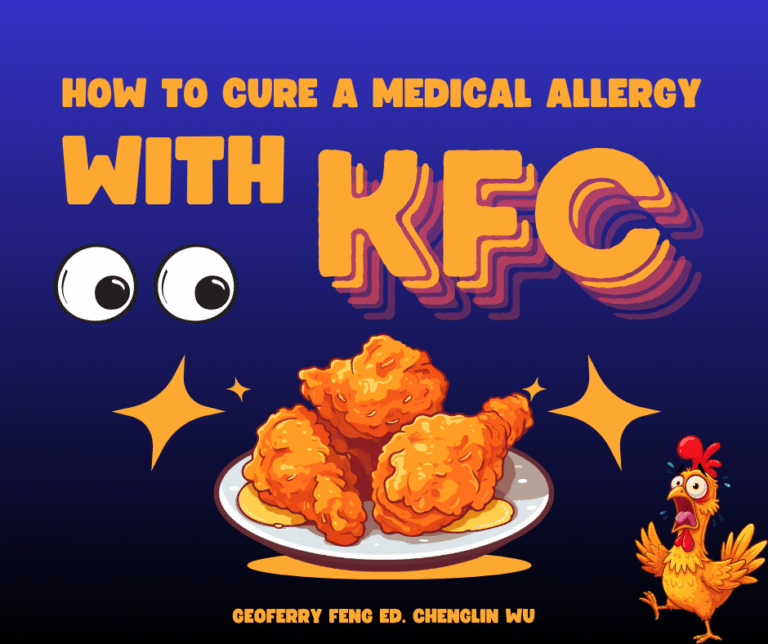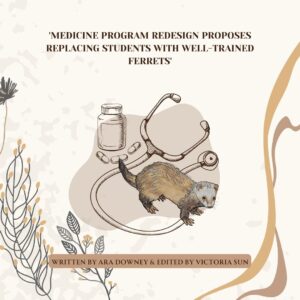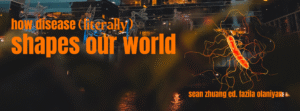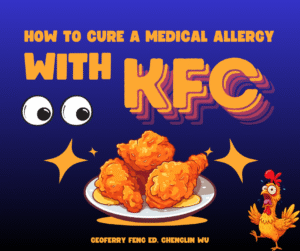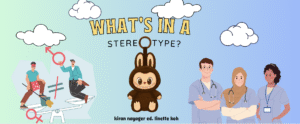
written by SHIRIN SHABAN (edited by ROSIE KIRK)
***
I’m sure we’ve all seen the memes:
The list goes on. Funny as they may be, laughing in the face of a serious threat to global health perpetuates inaction.
Anti-vaccination sentiments are not a modern problem. For as long as vaccines have existed, there have been objections to their use, whether these be widespread or only in small, concentrated areas of the population. These objections have proven most severe when these deadly diseases recede into the annals of history [1]. In the absence of staggering death tolls and debilitating symptoms, some are now questioning the necessity of vaccinations. And in the age of overabundant digital information and social media’s ability to bring together groups of like-minded people, vaccine scepticism is at an all-time high.
Australia’s high vaccination rates have steadily increased in recent years; The percentage of NSW children fully immunised at 12 months is 93.7%. By 24 months, however, the proportion of fully immunised children falls below 90% in seven of our fifteen local health districts (LHDs), including South Eastern Sydney, North Sydney and Western Sydney [2]. Although this sounds concerning, we can attribute this decrease to the recent change in the definition of ‘full immunisation’ at this age to include a fourth dose in addition to the usual three doses of DTPa-containing vaccine.
Despite the overall numbers, pockets of poor general immunisation coverage continue to exist. The Northern NSW LHD, including Byron Bay and Murwillumbah, has the lowest rates of coverage in the state. Data from the Australian Institute of Health and Welfare shows that in 2016-17 the percentage of fully immunised 1, 2 and 5-year-olds in Byron Bay lay below 75%, 70% and 75% respectively [3]. The numbers for Mullumbimby, north-west of Byron, are even lower. These figures demonstrate that Australia is not wholly immune to the alarming global anti-vaccination trends.

[4] Recorded vaccination objection by area, for children from 12 months to less than 7 years old.
The consequences of low and/or declining vaccination rates have been made abundantly clear elsewhere in the world:
- France has severely low vaccine confidence, with 42.9% of parents with children aged 1-9 years identifying themselves as vaccine-hesitant [5]. In the year leading to May 2018, France recorded over 2,500 cases of measles with a 22% hospitalisation rate and three recorded deaths. The majority of these cases affected children too young for the MMR vaccine, a group that should have been protected by herd immunity [6].
- In New York, a state of emergency was called in March in response to the city’s longest measles outbreak since the disease’s official elimination from the US 19 years ago. As of April 26th 2019, the country has reported 704 cases of measles [7]. The implications were so severe that US President Donald Trump backflipped on his 2014 anti-vaccination sentiments by encouraging Americans to “get the shot” and stating that “the vaccinations are so important” [8].
In 2014, Trump expressed anti-vaccination sentiments on Twitter [8].
This begs the question, should we be doing more to reach the parents that are hesitant to vaccinate – besides, you know, enjoying memes at their expense?
It can be tempting to chalk issues of vaccine hesitance up to low IQ, inability to understand scientific reasoning, and stubborn parents. However, these are gross generalisations that stem from an inability to understand their true perspectives. While we can all chuckle at anti-vaxx memes, this brewing culture of derision may potentially be destructive:
Reason #1: Anti-Vaxx memes generate a toxic environment.
Anti-vaxx memes perpetuate a feuding binary: us versus them. And these memes often paint vaccine-hesitant parents in a negative light. They tend to maintain a very specific narrative:
Uneducated or brainwashed upper-middle class anti-vaxx mum plots, intentionally or – even more pitifully – unintentionally, to kill her child before they reach X age by trusting emotional stories and/or, heaven forbid, essential oils.
These memes perpetuate a limited narrative and accepting these oversimplified caricatures will inevitably impact the way we approach our vaccine-hesitant patients. Recognising that these memes are overgeneralisations is essential in addressing our inherent internal biases lest they prevent us from treating all of our patients with due respect.
Reason #2: Making memes about an issue will not fix said issue.
Memes by their nature capture a bite-sized morsel of our culture at any point in time. What they do not do, however, is inspire people to fundamentally change their deeply-held personal beliefs. If anything, the aggressive nature of anti-vaxx memes achieves the opposite effect: alienation.
Research from multiple studies, including one of 604 pregnant Australian women, have identified that parents refusing vaccinations do so primarily based on issues of trust and experience [9, 10]. A lack of trust in vaccine institutions and the government, reinforced by first-hand experience and secondary stories ascertained through group discussions, has dwindled confidence in vaccination necessity.
Coupled with the mainstream approval of anti-vaxx memes, this atmosphere could further discourage patients who are vaccine-hesitant to seek advice from health professionals for fear of ridicule or dismissal of their concerns. It is our job to listen to these individuals’ stories. Their questions. Their concerns. It is our obligation as future medical professionals to care for our patients – however misguided we believe them to be.
It’s tempting to disregard the conspiracies that vaccination is bred from commercial gain by quoting this year’s $5 billion revenue of the Australian alternative and complementary medicine industry [11]. It’s equally tempting to reference the hundreds of papers explicitly disproving the causal link between the MMR vaccine and autism, when faced with people that continue to quote Wakefield’s faulty scientific data [12]. There are so many instances where we will feel the need to minimise the concerns of these individuals through thoroughly backed figures.
But perhaps there is a task more important and difficult than proving them ‘wrong’ for believing what they do. Perhaps we should take advantage of our power as healthcare workers by genuinely attempting to understand our patients’ choices.
And who knows, maybe being more open and actually listening to our patients will make them more open to listening to us…
Note: An article on this topic that I personally found interesting, and that I highly recommend reading is “The unsubtle sexism of the ‘Anti-Vaxx Mom’ meme”. Check it out for yourself: https://www.salon.com/2019/02/10/the-unsubtle-sexism-of-the-anti-vax-mom-meme/.
References
1. Hussain, A., Ali, S., Ahmed, M., & Hussain, S. (2018). The Anti-vaccination Movement: A Regression in Modern Medicine. Cureus, 10(7), e2919. doi:10.7759/cureus.2919
2. https://www.health.nsw.gov.au/immunisation/Documents/2017-annual-coverage-
report.pdf
3. https://www.abc.net.au/news/2017-06-08/childhood-vaccination-rates-still-
around-50-percent/8600196
4. Beard, F. H., Hull, B. P., Leask, J., Dey, A., & McIntyre, P. B. (2016). Trends and patterns in vaccination objection, Australia, 2002-2013. Medical Journal of Australia, 204(7), 2 75.
5. Z. Rey, D., Fressard, L., Cortaredona, S., Bocquier, A., Gautier, A., Peretti-Watel, P., … On Behalf Of The Baromètre Santé Group (2018). Vaccine hesitancy in the French population in 2016, and its association with vaccine uptake and perceived vaccine risk-benefit balance. Euro surveillance: European communicable disease bulletin, 23(17), 17-00816. doi:10.2807/1560-7917.ES.2018.23.17.17-00816
6. https://www.vaccinestoday.eu/stories/france-measles-outbreak-babies-hit-hardest/
7. Center for Disease Control and Prevention. (2019). Measles Cases in 2019. US Department of Health and Human Services. Retrieved from: https://www.cdc.gov/measles/cases-outbreaks.html
8. https://www.abc.net.au/news/2019-04-27/trump-urges-vaccinations-against-
measles-as-outbreak-continues/11051496
9. Dubé, E. Vivion, M. & MacDonald, N. (2015). Vaccine hesitancy, vaccine refusal and the anti-vaccine movement: influence, impact and implications. Expert review of vaccines. 14(1).99-117. doi: 10.1586/14760584.2015.964212
10. https://www.unisa.edu.au/Research/institute-for-choice/Our-Research/Under
standing-the-Anti-Vaxxer-Movement/
11. https://www.theguardian.com/australia-news/2018/jan/17/science-being-thrown-
out-the-window-in-australias-health-policy-experts-tell-mps
12. Taylor, L. E., Swerdfeger, A. L., & Eslick, G. D. (2014). Vaccines are not associated with autism: an evidence-based meta-analysis of case-control and cohort studies. Vaccine, 32(29), 3623-3629. doi:10.1016/j.vaccine.2014.04.085








